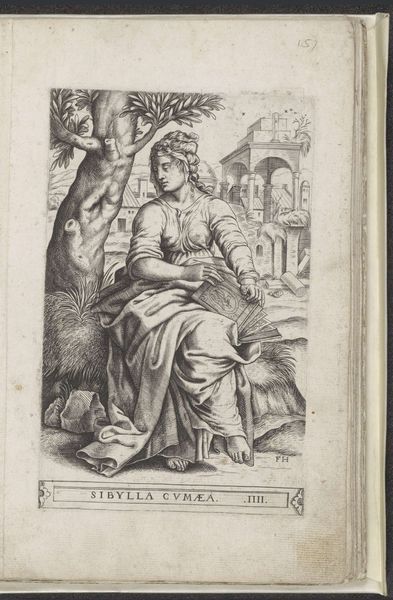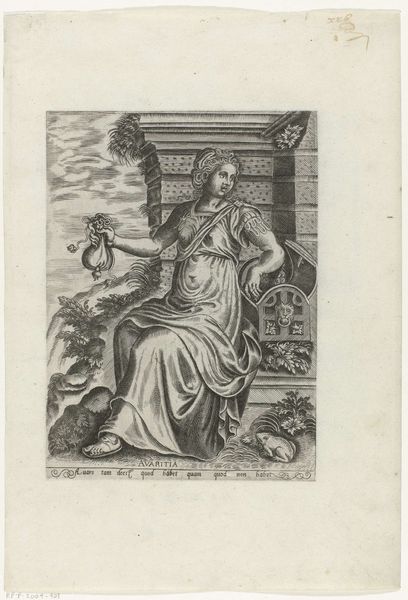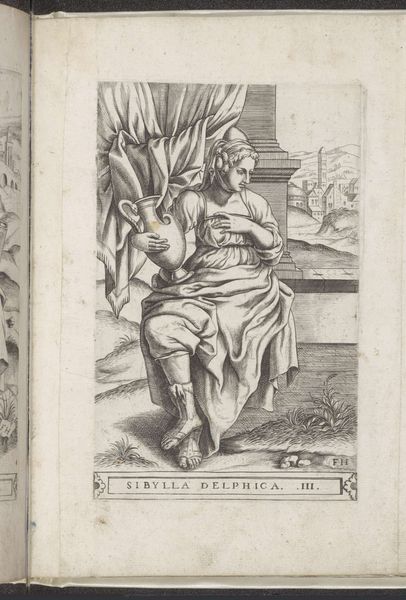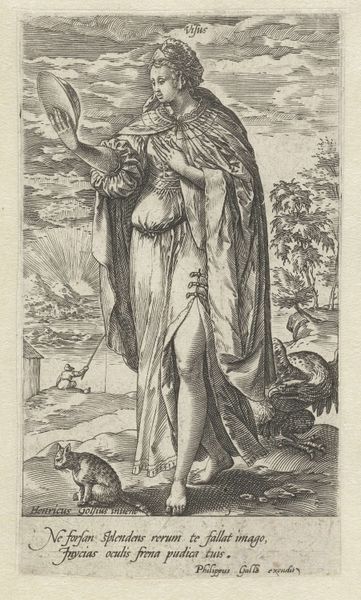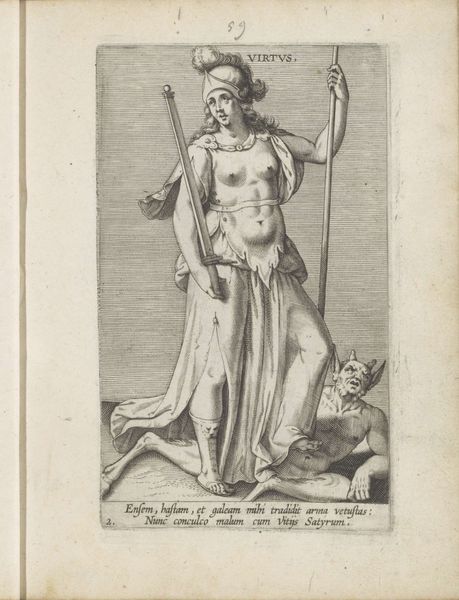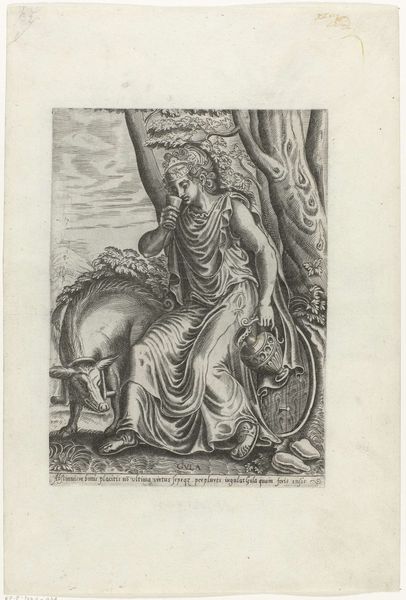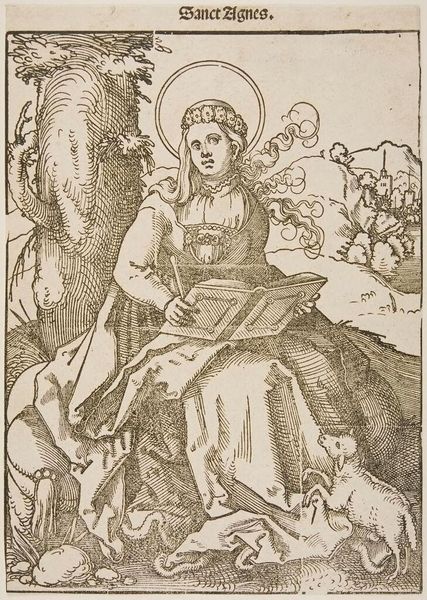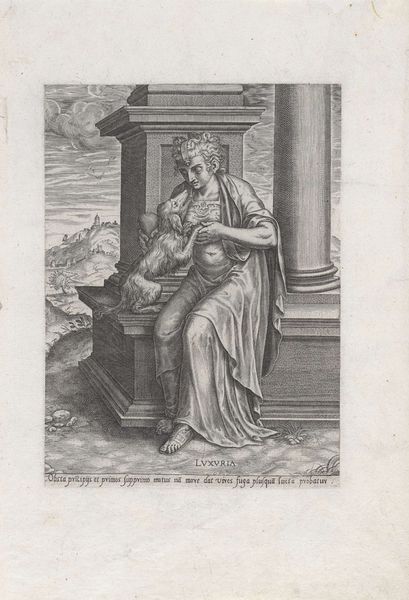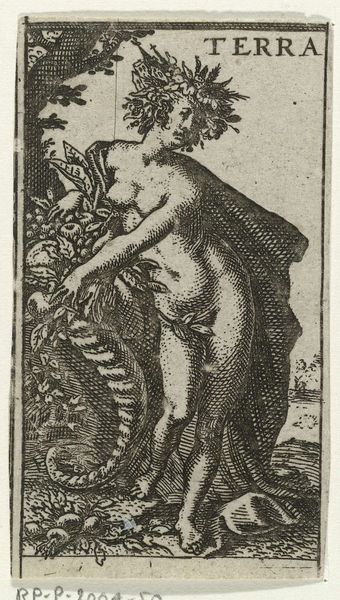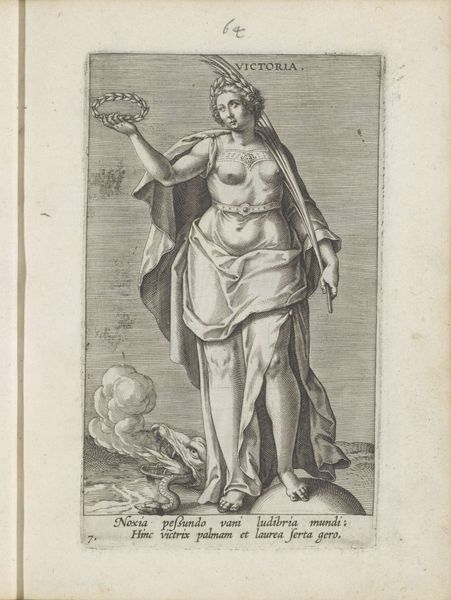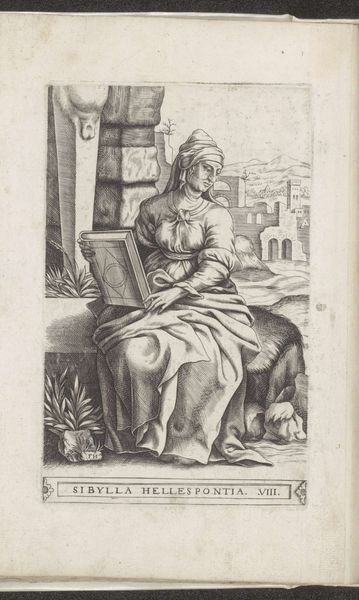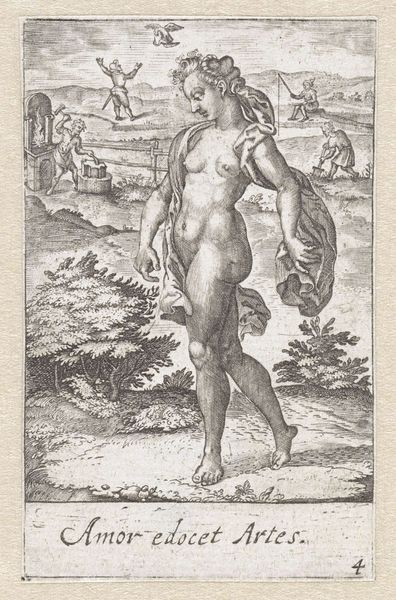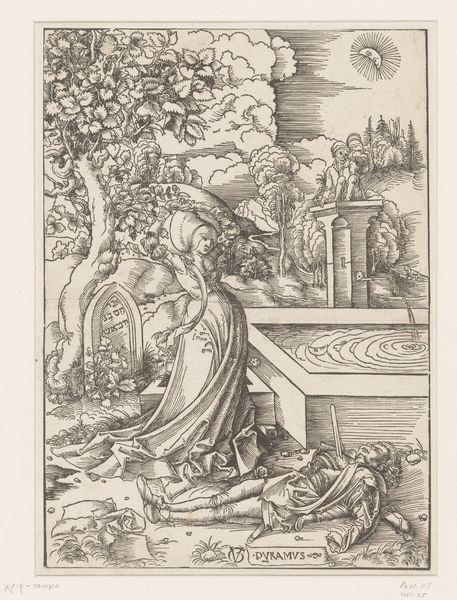
print, engraving
#
allegory
# print
#
mannerism
#
figuration
#
form
#
line
#
history-painting
#
engraving
Dimensions: height 220 mm, width 161 mm
Copyright: Rijks Museum: Open Domain
Curator: Immediately striking! The air is heavy with discontent, isn't it? That shadowed figure, the ominous serpent... It all just vibrates with a subtle malice. Editor: You’re right, there is something unsettling about it. This is "Afgunst," or "Envy" created around 1575. It's an engraving. The printmaking medium offers a fascinating lens to consider its historical reproduction, a method of dispersing a cautionary vision, accessible perhaps, in a different manner than painting to wider audiences, thereby intensifying the engraving's sociopolitical agency. Curator: Absolutely, it speaks volumes. And look at her – is she eating an apple? Such clever use of iconography there with that particular fruit representing temptation and sin... I get such strong Eden vibes but everything is perverted here. I wonder what kinds of labor went into producing the prints from an etcher? The way an artwork changes from an intimate and individualized making, like a painting, towards mass production opens the possibility of viewing it anew. Editor: True. And in line with the style that is characteristic of the era, specifically Mannerism, one might consider it a commentary on artifice in itself. The means of reproduction itself reflecting on its conceptual underpinning? An intentional commentary on how easily ideas like envy can spread throughout a society—like prints themselves! Curator: That’s profound! Maybe that mass production capability further underscored the print’s potential influence, enabling that rather unfortunate notion of envy to creep far and wide… Editor: Exactly! The fact that we don’t know who produced the artwork is perhaps relevant here, since the anonymity of mass print production creates space for all types of interpretation to emerge… the work really feels contemporary as a result. Curator: Agreed. Well, that makes me look at it a bit differently now. Something sinister lingering here. I wonder how it all plays into artistic ownership or reception today... Editor: Yes. Looking back at this "Afgunst," or envy, created almost half a millennia ago provides new insight for me, too, particularly with respect to its role in shaping both past perceptions but contemporary views about moral and artistic creation today.
Comments
No comments
Be the first to comment and join the conversation on the ultimate creative platform.
